Male vs Female Koalas: 5 Key Differences
Koalas are incredible creatures that often represent Australia, alongside the iconic kangaroo! These animals are solitary creatures that like to stay in their specific environment. Their home can range in size, depending on facts such as their sex and age.
Speaking of, there are several differences between male and female koala bears. To find out just how similar and unique these animals can be, keep on reading.
Comparing Male and Female Koalas
| Traits | Male Koala | Female Koala |
|---|---|---|
| Size | 2 to 3 feet tall 9 to 39 pounds | 2 to 3 feet tall 11 to 26 pounds |
| Physical traits | Deep brown crease on chest Bare skin area on chest Visible testicles Front pouch | Little to no crease on chest Full hair on chest No visible nipples Backwards pouch |
| Reproduction | Begin mating between 3 and 4 years old. | Begin mating around 2 years old. |
| Health | Chlamydia | Chlamydia |
Key Differences Between a Male and Female Koala
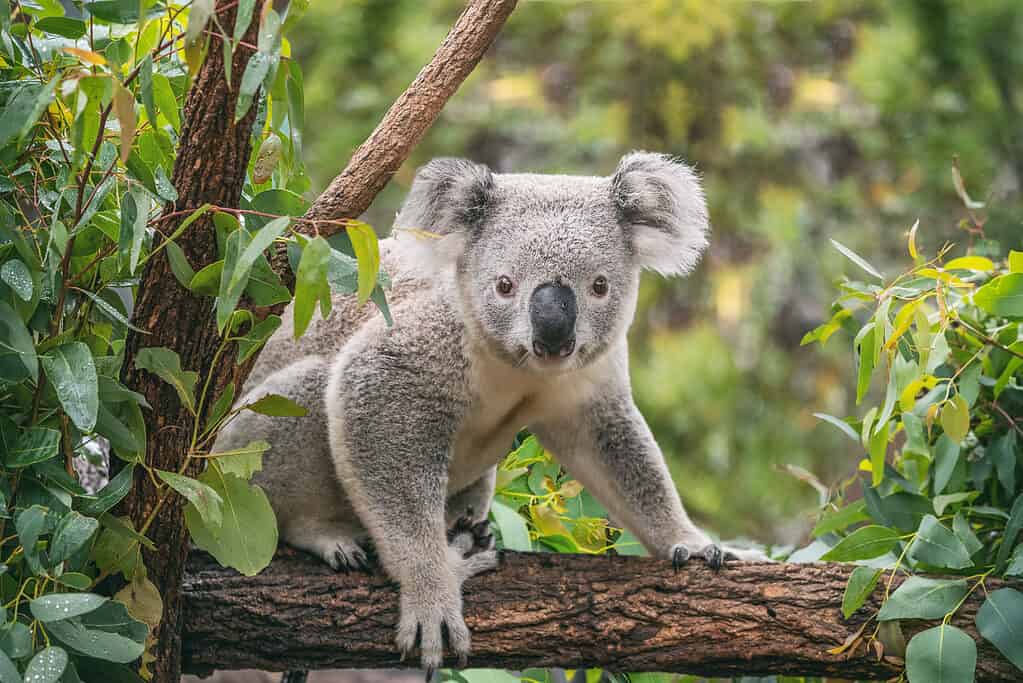
©iStock.com/Maridav
Male vs. Female Koala: Size
When it comes to weight, the male and female koalas fluctuate significantly. When they reach maturity, female koalas can only achieve a maximum weight of about 27 pounds, while male koalas can weigh up to 40 pounds at their peak.
As a result, male koalas weigh between 60 and 70 percent more than their female counterparts. In terms of height, there isn’t much of a difference between the two sexes. The average koala, regardless of whether it is male or female, measures between two and three feet tall.
Male vs. Female Koala: Physical Traits
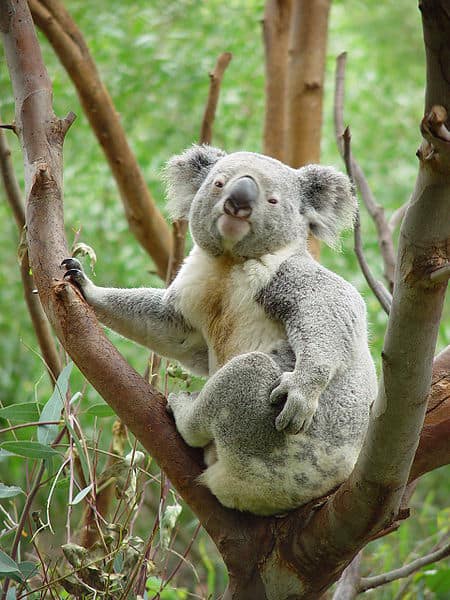
©BurningWell, Public domain, via Wikimedia Commons – License
Male
Male koalas that are adults have a pouch in the middle of their abdomens, with the opening located closer to the bottom of their stomach. You can also see genitals on the exterior of a male koala.
One of the easiest ways to sex a koala is by its sweat glands. Males will have a deep, dark crease in the center of their chest.
Female
Though it’s much duller and less apparent, most female koalas will have a prominent sweat gland on their abdomen as well. It has been observed that female koalas have a pouch that opens downwards, similar to that of wombats.
A female koala’s pouch entrance faces downward rather than upward when she initially gives birth.
Male vs. Female Koala: Reproduction
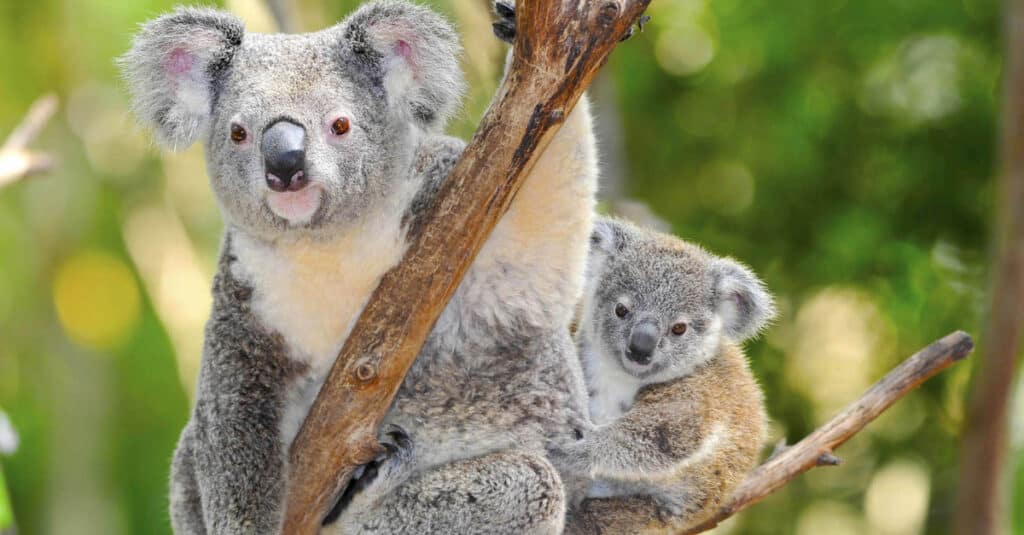
©worldswildlifewonders/Shutterstock.com
Males start mating when they are three or four years old. Females can start reproducing as early as age two, and for the next ten to fifteen years, they typically give birth once every year.
A koala’s gestation cycle is 35 days, during which the doe gives birth to one joey. Twins can also be born to female koalas, though this is not very common. Typically, babies are born in the months of November through February.
The young spend the following six months within the pouch before making their first appearance outside. After that, the joey will ride on its mother’s back for the first year of its life.
Male vs. Female Koala: Health

©iStock.com/YoriHirokawa
A variety of illnesses can shorten the lifespan of koalas. There is one disease in particular that these animals have to face. A bacterial ailment called chlamydia affects a large number of koalas in South East Queensland.
The illness linked to stress impairs immunity, can lead to blindness, and can harm the reproductive system, making a doe infertile. One reason for the present fall in koala populations is infertility caused by Chlamydia infections.
Male vs. Female Koala: Temperament
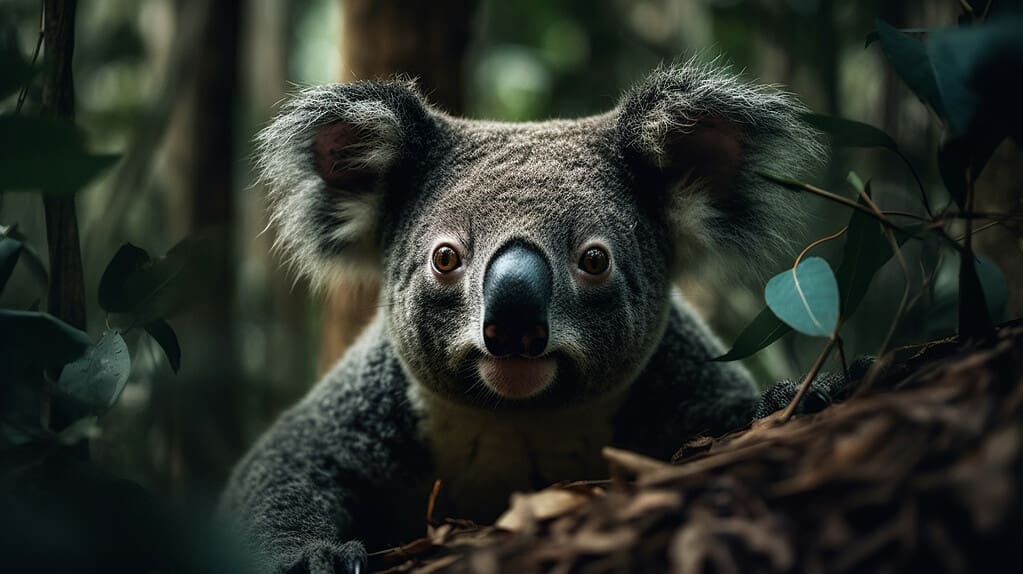
Even though they have a lovely and cuddly appearance, koalas are wild creatures that can bite or hurt you. They should never be approached. If you find an injured koala and require assistance, call a local wildlife agency.
Why?
Despite being incredibly cute to look at, goals can be quite temperamental. They don’t like to be close to people and definitely don’t enjoy being touched. There is one exception. A wildlife carer raising an orphaned koala can find it enjoyable to pet the animal.
However, every available information points to koalas’ dislike of strangers petting them. On land, a koala can run as fast as 20 miles per hour. They are able to jump seven feet up a tree when they’re scared or feel threatened.
Koalas spend most of their time relaxing. Because their diet has little nutritional value, they tend to rest frequently, but when they do move, they can do so quickly, easily, and powerfully.
Final Thoughts
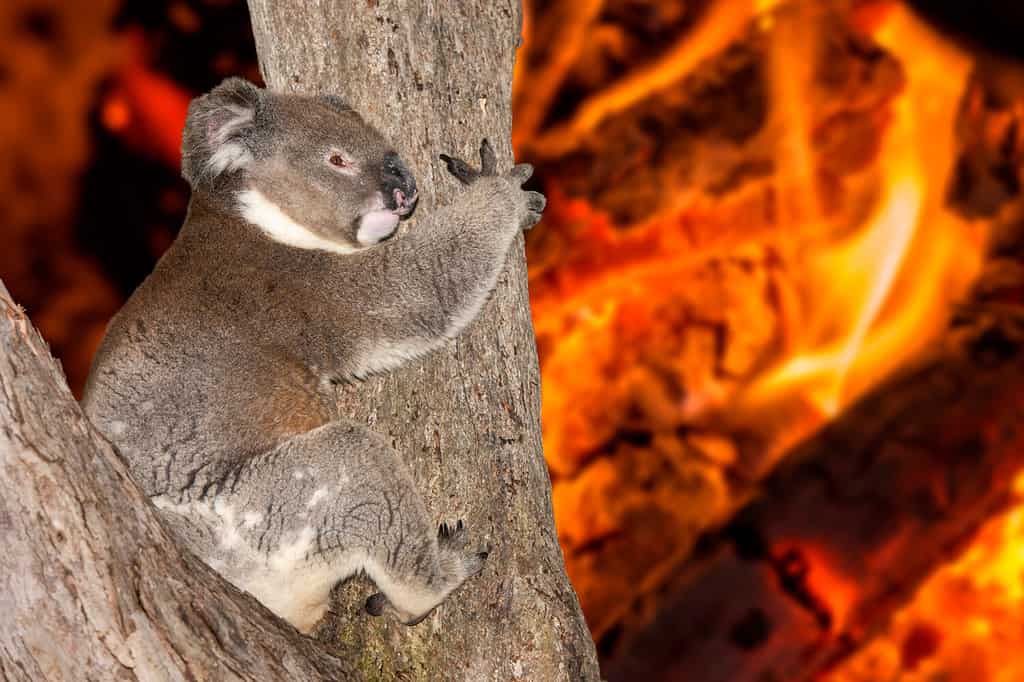
©Andrea Izzotti/Shutterstock.com
There are a handful of physical and reproductive differences between male and female koalas. Personality-wise, they can be relatively similar. As they face dangers like wildfires in their environment, it’s more important now than ever to care about these animals.









